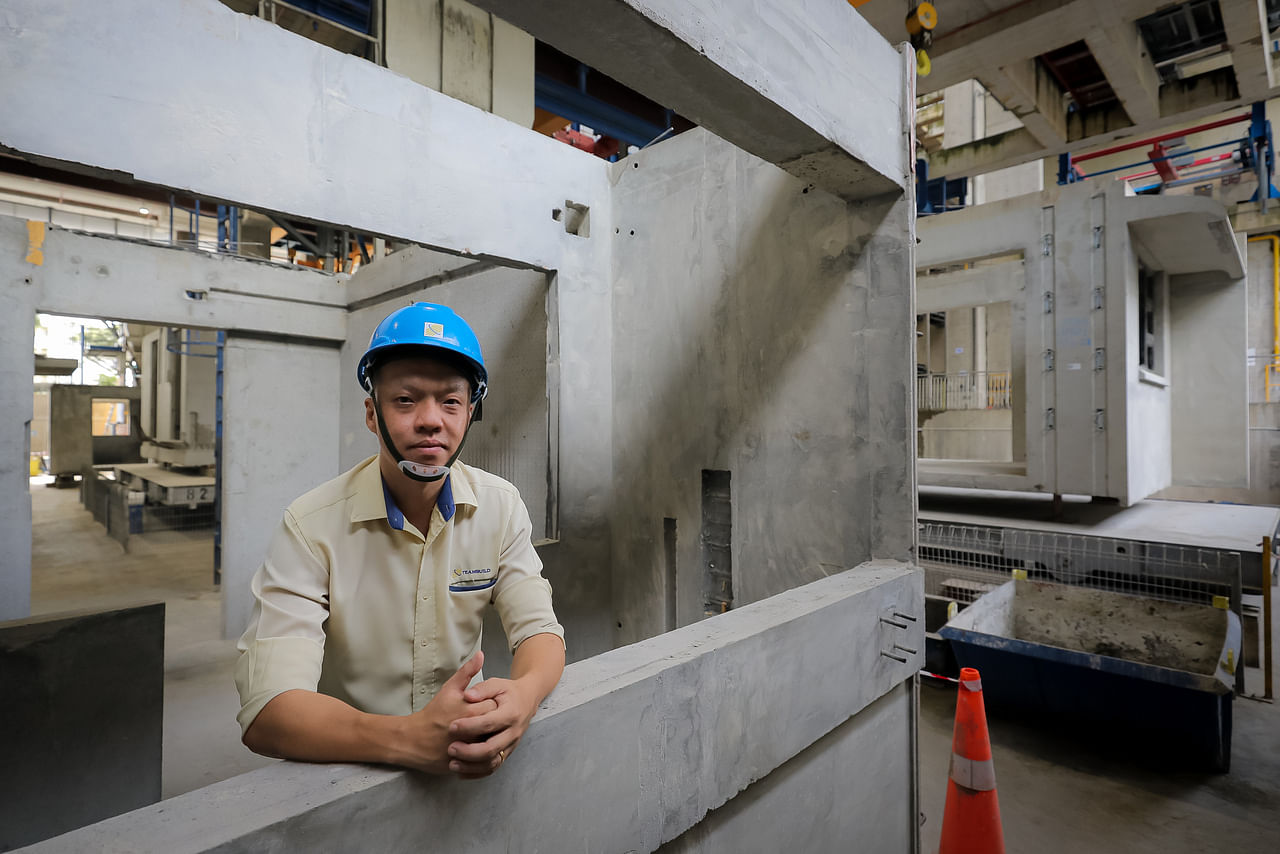Construction firm Teambuild shows how tech helps to minimise accidents at work sites
Sign up now: Get ST's newsletters delivered to your inbox
Follow topic:
SINGAPORE - Prefabricated building modules are neatly stacked in individual pigeonholes at Teambuild Construction Group's plant.
The company has more than 100 workers at its plant, but not a single one is seen near the organised stack because its automated racking system does all the work.
This means that workers do not have to work at height, or move the modules, minimising any risk of them falling and injuring themselves.
As part of its annual health and safety campaign, the Singapore Contractors Association (Scal) held a site visit to Teambuild's premises in Defu South Street on Friday (June 24).
The company showed more than 30 representatives of construction firms and safety officers the innovations it uses to improve productivity and safety at the workplace.
Mr Allan Low, Teambuild's senior environmental health and safety manager, told the media that the plant was designed with these safety considerations in mind when it was completed in 2019.
"Since the start, we have considered how to eliminate all the possible height risks. The various levels of this yard are also built with this consideration."
The firm specialises in prefabricating modular units in a factory before they are transported to the construction site. The conventional method is to build structures at the location itself.

In another part of Teambuild's premises, workers key in the specific dimensions of rebars - or steel bars used to reinforce concrete - that they need.
A machine then cuts the steel according to the desired specifications, minimising accidents.
While such solutions protect workers, Scal council member David Leong acknowledged that some companies may not have the capital to invest in such technology.
He added: "I think they can look at ways of minimising work from height by getting things done in a prefabricated manner so that people don't really need to climb up on things to work.
"For prefabricated works, you just hoist the thing up and it's ready, so it cuts out a lot of these work-at-height issues, which are one of the main problems at sites right now."


According to Ministry of Manpower (MOM) statistics, 29 per cent of the 48 major injuries in the construction sector in the past quarter were caused by falls from heights.
The use of prefabricated parts is part of the construction industry's transformation map as it leads to higher productivity and safer work sites.
To support innovations in the industry, the Productivity Innovation Programme will be extended until March 31, 2024, Senior Minister of State for National Development Tan Kiat How said in Parliament in March.
Up to 70 per cent of the cost of adopting productivity-boosting technologies and innovations will be funded by the programme.

